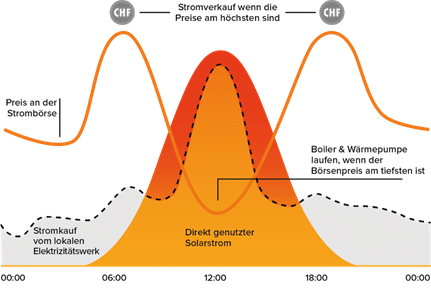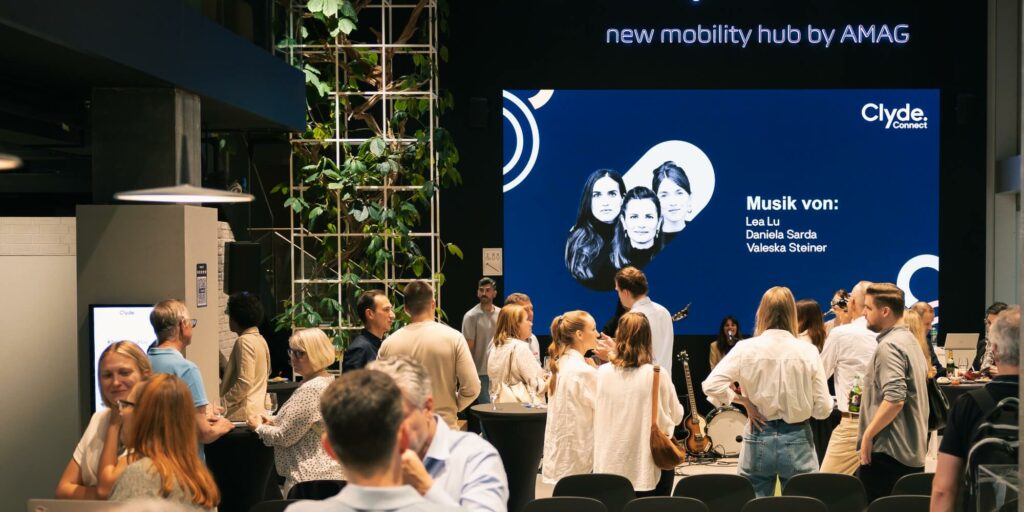
Your own photovoltaic system is the first step
An effective way to reduce costs is to use your own photovoltaic systemThe cost of self-generated electricity is considerably lower than that of electricity from the grid, e.g. only 9–12 cents/kWh instead of 30 cents/kWh. If the photovoltaic system is equipped with a suitable home energy management system (HEMS), such as Helion ONEan electric car can be charged automaticallywhen the photovoltaic system is generating electricity.
Use of market-based price indicators
However, as electric cars and photovoltaic systems become more widespread, other factors also play a part. The price of electricity is not constant all year round; it varies every hour depending on supply and demand. If demand is high and supply is low, a kilowatt hour is expensive. On the other hand, when demand is low and supply is high, prices are low – sometimes even negative. With the electricity power exchange option of the Helion solar tariff, customers can automatically control charging of their car and the infeed into the power grid in such a way that an optimum overall financial result is always achieved.
In future, fully automated control via Helion ONE will also be able to take into account the desired level of charge of the car. My car doesn’t have to be fully charged every morning; for most people, a range of 50–100 km a day is enough. This means charging can be left for the weekends, when the rates are cheaper. If I still need a full charge, I can simply override the automatic setting.

Increasing utilisation of electricity grids
Another aspect that will play an important role in the future is the strain that the charging of electric cars places on electricity grids. Currently, electricity grids are mainly designed for maximum expected output. As the number of e-cars increases, the network will have to be expanded considerably, resulting in corresponding costs for consumers. In order to avoid some of these costs, another variety of smart charging can be used: when all e-cars are connected and charged at the same time, very high load peaks occur. By automatically distributing the charging times, these peaks and, as a result, grid costs can be easily avoided. In addition, the load on the grid fluctuates every day due to a range of factors. Ideally, this is also communicated to the customer or the HEMS by means of a price indicator, so that I, as a user, can decide based on the price whether charging the car at peak times is worth the cost.
For example, from 1 January 2024, energy supplier Groupe E will offer a corresponding grid fee, which will vary every quarter of an hour, as an option in its grid area.
In this way, we are slowly getting closer to the smart use of our scarce resources.
Just test
an electric car?
Do you find electric mobility exciting but aren’t sure which vehicle is right for you? If so, there’s no time like the present – simply pay Clyde a visit online. Thanks to flexible subscription periods and mileage packages, you can test electric cars completely at your leisure and find out whether electric mobility has a place in your day-to-day life. Easy!



